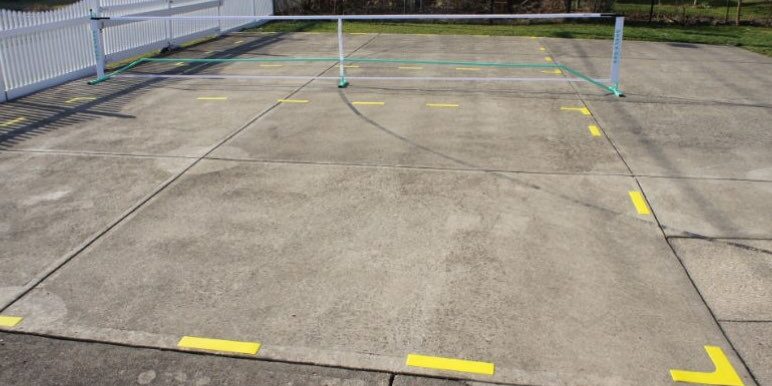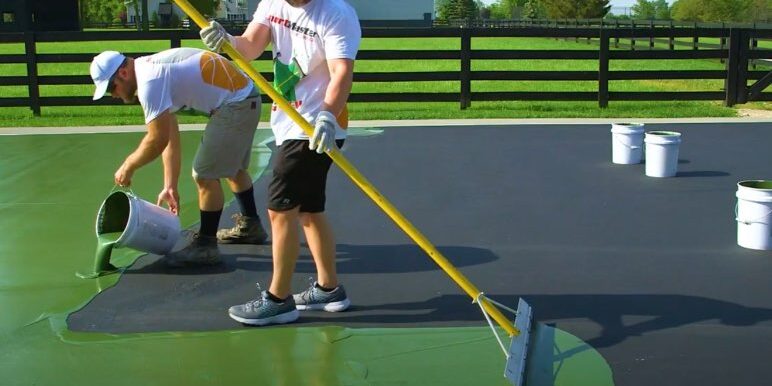Sustainable Practices in Pickleball Court Building You Should Know
As the appeal of pickleball remains to increase, so too does the requirement for lasting practices in court construction. This technique not only addresses environmental problems however likewise enhances the long life and capability of the courts. From choosing environmentally friendly products to applying reliable drainage and energy-saving illumination services, there are many approaches to consider. Yet, the effect of these methods expands much beyond the court itself. Comprehending how each element adds to a much more sustainable future welcomes additionally exploration into the elaborate balance in between entertainment development and ecological stewardship.
Selecting Eco-Friendly Materials
Picking eco-friendly materials is a critical action in the building of lasting pickleball courts. The choice of sustainable products not just lessens environmental impact but likewise improves the durability and performance of the court. Secret materials include reused rubber for the surface, which provides superb sturdiness and shock absorption while diverting waste from garbage dumps.
Furthermore, making use of locally sourced materials decreases transport emissions and supports regional economic climates. Pickleball court construction. Utilizing native woods for secure fencing and seats can offer a sustainable visual while ensuring resilience versus the aspects.
Incorporating absorptive materials for court foundations can even more add to sustainability by enabling natural water drain and decreasing drainage. These choices not just protect regional environments but additionally promote healthier play environments.
Effective Drainage Solutions
While the choice of eco-friendly products is vital, applying reliable drain solutions is similarly crucial for keeping sustainable pickleball courts. Proper water drainage not just safeguards the court surface area from water damages however likewise reduces disintegration and runoff, advertising environmental stability.
Effective drain systems can consist of permeable paving, which permits water to penetrate the ground instead than merging externally. This decreases the chance of standing water, which can bring about mold and various other upkeep problems. Additionally, integrating strategically placed water drainage channels and swales can guide excess water far from the court area, ensuring a completely dry playing surface and preventing soil disintegration.
Using native vegetation in the landscape design around the courts can additionally enhance water drainage by soaking up excess water and lowering runoff. These plants need much less watering and advertise biodiversity, straightening with sustainable practices.
Additionally, it is important to consistently maintain the water drainage system to ensure its long-lasting effectiveness. This includes cleaning debris and surveillance for blockages. By prioritizing reliable drainage services, pickleball court contractors can substantially add to the sustainability and long life of the facility, eventually benefiting both players and the atmosphere.
Energy-Efficient Illumination Options
As the demand for pickleball remains to expand, integrating energy-efficient lights choices into court style has come to be increasingly vital for sustainability. Traditional lights systems often eat excessive energy, contributing to higher functional costs and ecological effect. For that reason, taking on modern, energy-efficient modern technologies is vital for both brand-new building and constructions and restorations.
LED (Light Emitting Diode) lighting stands out as a premier choice because of its long life and energy financial savings (Pickleball court construction). Compared to traditional lighting, LEDs utilize about 75% less power and can last up to 25 times longer, dramatically decreasing upkeep expenses. Additionally, the directional nature of LED illumination reduces light pollution, ensuring that lighting is concentrated on the court instead than surrounding areas.

Lasting Surface Area Alternatives
Discovering lasting surface area options for pickleball courts has gotten traction amongst contractors and players alike. The focus on environment-friendly materials not only lines up with the expanding environmental understanding but additionally boosts the performance and resilience of the courts.
This product provides exceptional shock absorption, decreasing the threat of injuries for gamers while advertising sustainability. These floor tiles are very easy to replace and set up, and their convenience allows for various court setups.
Natural turf courts are additionally emerging as a sustainable option, promoting biodiversity and decreasing the heat island effect. They call for normal upkeep and water, which great site may not line up with all sustainability goals.

Water Preservation Strategies

An additional efficient technique entails the setup of rainwater harvesting systems. These systems keep and gather rainwater for usage in keeping court surfaces and landscape design. This technique not only preserves drinkable water yet also minimizes dependence on community sources.
Moreover, utilizing drought-resistant landscaping around the courts is crucial. Native plants call for less water and are much better adapted to regional environment problems, thus reducing total water consumption. Additionally, making use of reliable irrigation systems, such as drip irrigation, makes sure that water is delivered directly to plant origins, reducing evaporation and waste.
Conclusion
Integrating sustainable practices in pickleball court construction considerably contributes to ecological conservation and resource effectiveness. By prioritizing these methods, the building and construction of pickleball courts can straighten with wider ecological objectives while advertising longevity and performance within neighborhoods.
As the popularity read the article of pickleball proceeds to climb, so as well does the need for sustainable methods in court building.Selecting eco-friendly materials is a crucial step in the building of sustainable pickleball courts. By prioritizing energy-efficient illumination options, pickleball court producers can contribute to an extra sustainable future while meeting the demands of players and stakeholders alike.Including lasting surface area choices not just improves the efficiency of pickleball courts yet additionally leads the method for carrying out reliable water conservation strategies.Including sustainable practices in pickleball court building and construction substantially contributes to ecological conservation and resource performance.